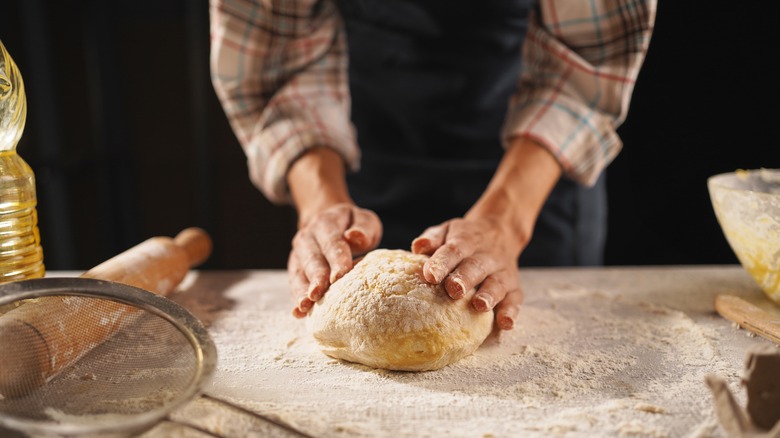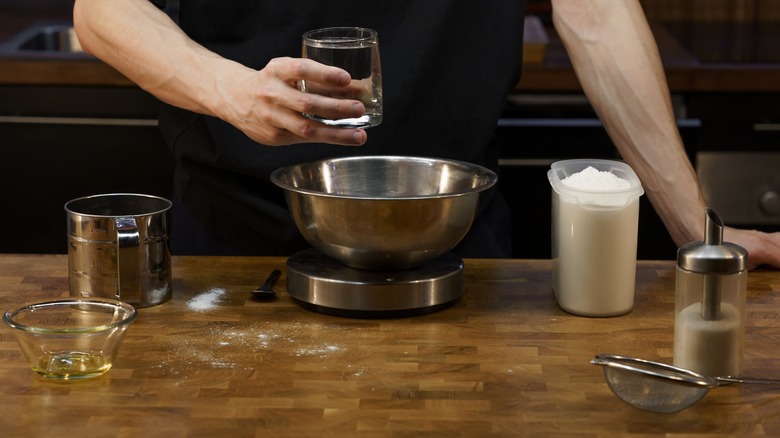The Important Kitchen Tool You Need When Making Pizza Dough At Home
We may receive a commission on purchases made from links.
There's nothing quite like a homemade pizza night. Whether you're setting the table for a dinner party or having a night in with the family, opting for homemade cheesy pizza lets everyone be involved in the decision-making process. Plus, at the end of the collaboration, everyone gets to eat pizza. Tough to get better than that! If you're going down this route, there's an important first step that can make or break the meal, which is nailing the dough. And for that you need a kitchen scale.
Anyone who has made pizza dough from scratch at home knows how crucial it is to ace the measurements. As with most baking, getting pizza dough right is often more science than art. Because of that, one of the most common issues comes from inexact flour measurements. This is why the most important tool to keep close at hand when making pizza dough is a kitchen scale. You may think that you're being precise when measuring out flour in cups, but flour's ability to shift and compress could mean you're getting dramatically different quantities than expected. In order to craft the perfect dough, measuring by weight is much preferred to measuring by volume, as it ensures you're putting in exactly the amount you want.
Creating the perfect pizza dough
For those unaccustomed to using a kitchen scale, it's quite easy once you get the hang of it, and purchasing one doesn't have to be a pricey affair — you can snag an Amazon Basics Digital Kitchen Scale for around $10. Once you choose your mixing bowl for making the pizza dough, place it on the scale by itself and press "tare" button. This step zeroes out the scale with the bowl's weight included so that you don't have to worry about doing math along the way. Just make sure you've adjusted the scale to read the correct unit of measurement before you start adding ingredients.
The quest for the perfect pie starts with a scale but doesn't end there. Another key to getting your pizza dough right is to add warm water when incorporating your yeast. Using cold water is a common mistake for cooks new to the homemade pizza dough game, and it can have a major impact on the ability of the dough to rise properly. This isn't just something to remember for those cooking pizza from scratch, though. Whether you're making it by hand or buying it in the store, temperature plays a crucial part in getting your pizza dough to stretch correctly. If using store-bought dough, bring it to room temperature before starting to stretch it, otherwise you may face elasticity issues.


